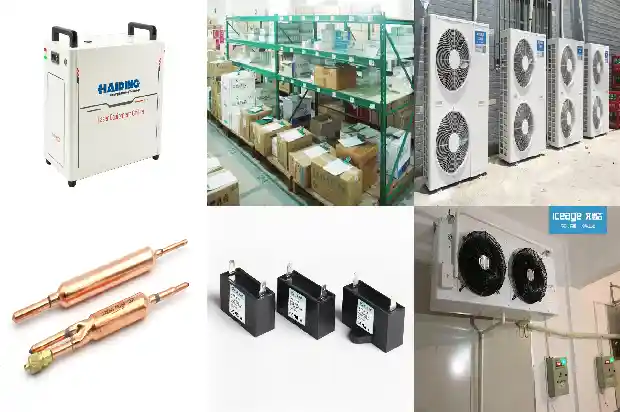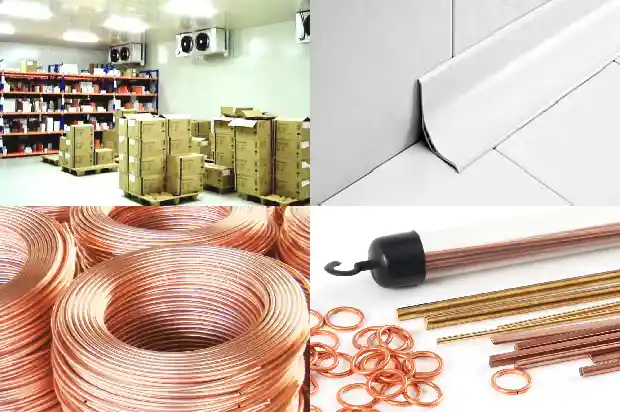Common Faults and Corresponding Solutions of Chillers During Use
2025-01-10
In industrial fields such as the pharmaceutical industry, chillers play a crucial role. With the continuous development of the pharmaceutical industry, the chiller market also has good development prospects. Data shows that the market capacity of chillers in China is increasing at a rate of 8% annually, and the market share of domestic chillers is increasing year by year. The process of import substitution is expected to accelerate.
At the same time, chillers also face new requirements in terms of quality, stability, etc. It is understood that the current chiller industry in China is developing towards intelligence, energy conservation, humanization, and unit integration. Relevant chiller manufacturers are constantly exploring and improving, updating equipment and technologies to facilitate the better development of industries such as pharmaceuticals.
The author has also learned that during the operation of chiller equipment, some common faults are inevitable. Users need to understand the possible causes of these faults and promptly adopt corresponding solutions to ensure more stable production operations. So, what are the common faults of chillers?
Small temperature difference between inlet and outlet water
When users encounter a small temperature difference between the inlet and outlet water of the chiller, the general reasons are as follows.
First, the cooling capacity output by the chiller is low. For example, there may be a fault in the unit itself, or it is not fully loaded. Industry insiders suggest that in such cases, users can make a preliminary judgment by observing parameters such as the operating current of the chiller unit.
Second, the heat transfer effect of the equipment is poor. For example, severe fouling occurs on the heat transfer tubes, affecting the heat exchange of the chiller unit.
Third, the water flow is too large. Users can make a judgment by observing the water pressure difference between the inlet and outlet of the evaporator, as well as the operating current of the water pump. In addition, after ruling out the above problems, users can check whether the sensors or thermometers are accurate.
When users encounter a small temperature difference between the inlet and outlet water of the chiller, the general reasons are as follows.
First, the cooling capacity output by the chiller is low. For example, there may be a fault in the unit itself, or it is not fully loaded. Industry insiders suggest that in such cases, users can make a preliminary judgment by observing parameters such as the operating current of the chiller unit.
Second, the heat transfer effect of the equipment is poor. For example, severe fouling occurs on the heat transfer tubes, affecting the heat exchange of the chiller unit.

Third, the water flow is too large. Users can make a judgment by observing the water pressure difference between the inlet and outlet of the evaporator, as well as the operating current of the water pump. In addition, after ruling out the above problems, users can check whether the sensors or thermometers are accurate.
Communication failure
It is understood that the computer controller controls each module through communication lines and the main interface board. The main reasons for communication failures are poor contact or disconnection of the communication lines, especially when the interface is oxidized due to moisture, resulting in poor contact.
It is understood that the computer controller controls each module through communication lines and the main interface board. The main reasons for communication failures are poor contact or disconnection of the communication lines, especially when the interface is oxidized due to moisture, resulting in poor contact.

High - pressure fault
When the exhaust pressure of the compressor is too high, it is likely to cause the high - pressure protection relay to operate.
So, under what circumstances will a high - pressure fault occur? It mainly includes: high cooling water temperature, poor condensing effect; insufficient cooling water flow, failing to reach the rated water flow; fouling or blockage of the condenser; over - charging of refrigerant; presence of non - condensable gases such as air and nitrogen in the refrigerant; false alarms caused by electrical faults.
When the exhaust pressure of the compressor is too high, it is likely to cause the high - pressure protection relay to operate.

So, under what circumstances will a high - pressure fault occur? It mainly includes: high cooling water temperature, poor condensing effect; insufficient cooling water flow, failing to reach the rated water flow; fouling or blockage of the condenser; over - charging of refrigerant; presence of non - condensable gases such as air and nitrogen in the refrigerant; false alarms caused by electrical faults.
Low - pressure fault
When the suction pressure of the compressor is too low, it will cause the low - pressure protection relay to operate. It is understood that the reasons for low - pressure faults are: insufficient or leaked refrigerant; insufficient chilled water flow; blockage of the evaporator, poor heat exchange; false alarms caused by electrical faults; relatively low external temperature.
In addition to understanding the above fault causes, users should also pay attention to the maintenance and upkeep of the equipment after using the chiller to ensure its extended lifespan and stable operation.
When the suction pressure of the compressor is too low, it will cause the low - pressure protection relay to operate. It is understood that the reasons for low - pressure faults are: insufficient or leaked refrigerant; insufficient chilled water flow; blockage of the evaporator, poor heat exchange; false alarms caused by electrical faults; relatively low external temperature.
In addition to understanding the above fault causes, users should also pay attention to the maintenance and upkeep of the equipment after using the chiller to ensure its extended lifespan and stable operation.
Related Articles
- Basic Faults and Preventive Maintenance of Water - cooled Units
- Composition and Common Faults of Screw Refrigeration Compressors
- Common Faults and Solutions of Central Air - conditioning Chiller Units
- Common Faults of Industrial Chillers
- Analysis and Troubleshooting of Common Faults in Air - source Heat Pumps
- Maintenance Methods for Faults in Screw Refrigeration Air - conditioner Compressors
- Common Faults and Troubleshooting Methods of the Moving Mechanism of Piston Compressors
- Analysis of Common Faults in Compressor Overcurrent and Burnout
- What are the reasons for the inactivity of the automotive air conditioning compressor? What are the common faults?
- Common Faults of HVAC Fan Coil Units
- Common Operating Faults and Treatment Methods of Centrifugal Compressors
- Common Four Faults and Replacement Methods of Scroll Compressor
- Analysis of Refrigeration Compressor Motor Faults
- Analysis and Treatment of Common Low-Pressure Faults in Chillers
- Analysis and Treatment of Common Low Pressure Faults in Chillers
- Common faults in refrigeration system (discharge temperature and pressure)
- Common Faults of Screw Compressor
- 9 Heating and Cooling Solutions: Pros and Cons You Must Know!
